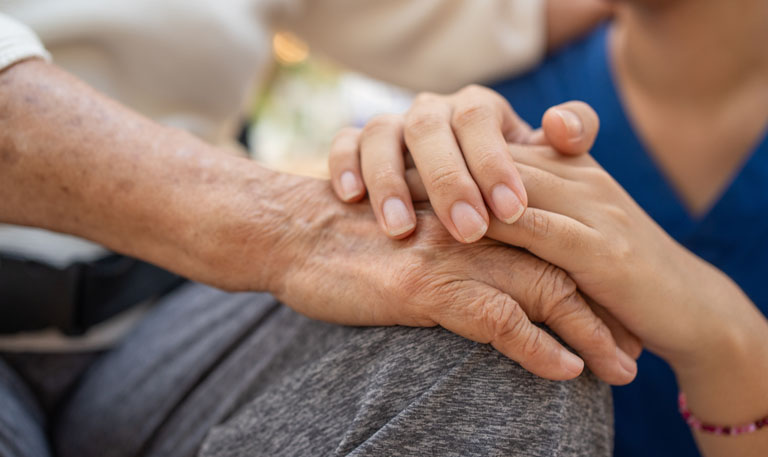Today more people in the Boomer Generation are living longer and at higher levels of functional well-being than ever. Their parents also lived longer, often unexpectedly and unprepared for living to advanced old age. So more and more of this so-called activist generation are thinking about care later in life.
The menu offered in today’s medical care can seem miraculous. And there is also strong evidence that from this extensive menu, there is much care that doesn’t benefit patients due to overdiagnosis and overtreatment.
As we age, we inevitably get closer to dying. That said, aging is good. It’s clearly better than dying! But we are approaching death later in life than previous generations. “Late in life care” is not end-of-life, palliative, or hospice care. It’s the concept that later in life we should carefully consider what care will really help us and how we can get it.
A patient I cared for over many years immigrated to the U.S. in 1968. A former teacher and lawyer, he worked at Boeing and following retirement provided notary and informal legal services to his large ethnic community. I saw him regularly and frequently over many years for management and treatment of chronic conditions such as diabetes and hypertension, and various acute problems. He loved life, his close family, and his work. He lived fully and had fun—going to nightclubs and casinos, line dancing, playing his saxophone and clarinet, and entertaining kids with magic tricks.
But, as he aged, over time his vision, hearing, and memory slowly worsened. Otherwise, he was in surprisingly good shape, thanks to caring relationships and mutual devotion within his large family. By all accounts, he still enjoyed his life.
Although I was his longstanding primary care doctor, I didn’t see him as often as you might think and certainly less than in the past. He had reached the stage where he preferred what I call “late-in-life care.”
Late-in-life care is for people who live to advanced old age, typically without a life-threatening illness. They may need extra attention from family, friends, and care providers. They still need things like flu and COVID vaccines and treatments for troublesome symptoms from conditions such as arthritis, anemia, skin problems, or perhaps a urinary tract infection.
But care can be harmful in late life. Too much care can upset homeostasis, that delicate sense of internal stability that often helps very old people stay active in their remaining precious years. Late in life most people don’t need the stress and follow-up from diagnostic procedures such as colonoscopies, mammograms, Pap smears, PSA blood tests and others aimed at finding cancer, or certain treatments with great risks, which few would survive. Likewise, frail people do not need drugs that put them at risk for falls and foggy thinking. These are common side effects of many medications for anxiety, trouble sleeping, incontinence, and high blood pressure. Visits to emergency departments or urgent care can lead to high-tech medical tests and interventions causing stress and confusion from which they may not recover.
Late-in-life care for my patient was in-person in clinic every one to two years. In between visits, his daughter and I discussed his care via phone and e-mail, adjusting medications as needed to treat his diabetes and other chronic conditions. This allowed him to spend his time the way he preferred, watching his favorite TV game shows, taking slow walks to buy lottery tickets, and occasionally having trips to a casino escorted by his grandson.
Near the end of his life at age 99 he began to fail. Antibiotics cleared a lung infection. His energy waned and he quit going downstairs for breakfast. He stopped eating. His daughters took turns being with him. Two months after he recovered from an otherwise mild pneumonia, after a restless night, he told his daughter “we have to go” and asked for a favorite old woolen cap he liked to wear when it was cold. His daughter put it on him. Then, this well-loved man stopped breathing and died.
Late-in-life care is not absence of care. It is not asking people to “get out of the way and die,” so younger people can get care as (former Colorado) Governor Richard Lamm infamously suggested in 1984. It’s geared to the short term, immediate needs of a person who has lived a long life and avoiding care of little or only future value. As you might expect it involves planning and clearly expressing personal preferences, especially since health care systems are not typically geared to this kind of care. But with supportive family, friends, and a trusted professional like a primary care doctor or other care partner, it is possible. Most of us, if we are fortunate to live long enough, would want high-quality, late-in-life care.
Eric B. Larson, MD, MPH, is a Professor of Medicine at the University of Washington. He was Co-Principal Investigator of the SMARRT trial and formerly Vice President for Research and Healthcare Innovation at Group Health and Kaiser-Permanente Washington. With colleagues he co-founded the long running Adult Changes in Thought (ACT) study in 1986. He continues research through the UW Alzheimer’s Disease Research Center and other projects. He has participated in The Lancet Commission on Dementia since its inception. With co-author Joan DeClaire he wrote the well-received book, Enlightened Aging: Building Resilience for a Long Active Life.
The End of Life and a Good Death: Planning for the Inevitable Can Add Joy to the Journey


